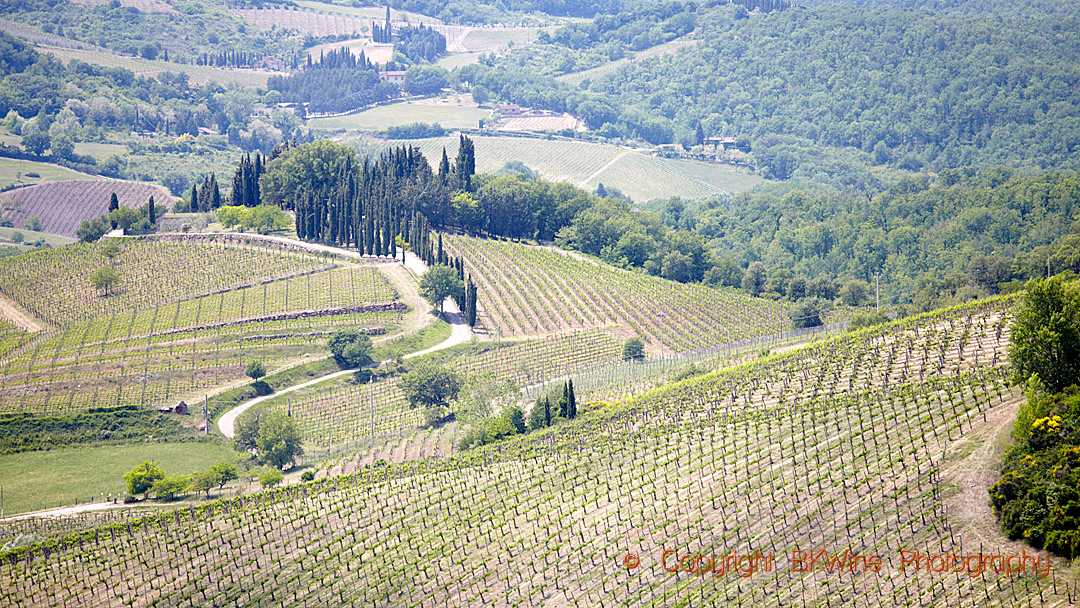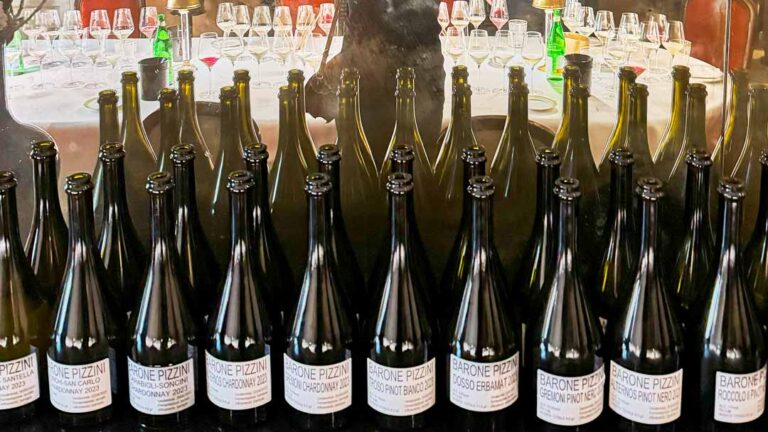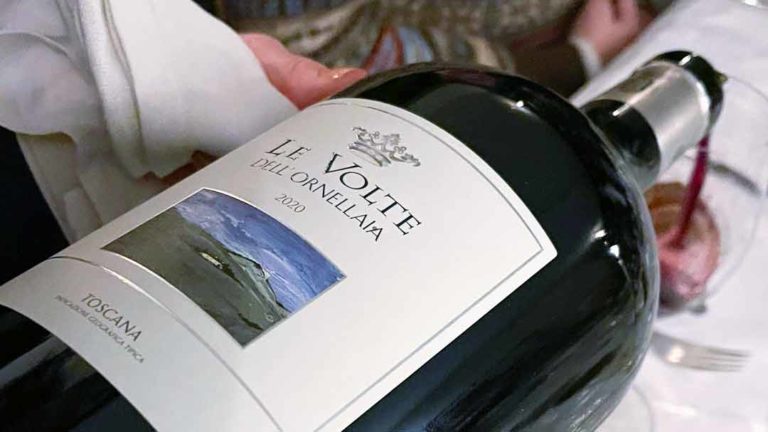Chianti Classico is moving towards a regional sub-division similar to what has already been done in Barolo and Barbaresco. The goal is that the wine region’s eight municipalities should be allowed on the label at the end of this year. The Mazzei family goes ahead of the time and releases three new “cru” from Chianti Classico.
The church bells are ringing in the tiny village of Fonterutoli next to Castellina in Chianti, while laundry hanging to dry outside a window is swaying in the wind. The terracotta-coloured houses testify to a hard and long life.
“Look here, these are World War II bomb shards,” says a slender elderly gentleman, pointing to a pair of metal objects trapped in cracks on the wall on one of the houses.
“Do you know that this is where the Florentine rider met his rival from Siena and the border was drawn between Florence and Siena in the 14th century, you know the legend with the black rooster,” he continues.
The whole village breathes history and the villagers mix with long-distance visitors who rent some of the Mazzei family’s beautifully decorated rooms in the village.
“But we are Florentines, you can hear it when we talk,” says the man as his eyes are glowing with pride.
The Mazzei family has a long and ancient history. It was, for example, in one of the family’s documents from 1398 that Chianti was first mentioned in writing.
But if you go down the hill, the old and ancient is replaced by new and modern. The wine cellar is functional but is built so that it blends into its beautiful surroundings. Here there are oak barrels and steel tanks in long rows and a modern tasting room receives the curious wine tourists.
The Mazzei family is one of the driving forces behind a division of Chianti Classico into eight different municipalities. Previously there were nine but two, Tavernelle and Barberino, have been merged. The goal, according to the consortium, is for the division to be completed by the end of the year. It will then be allowed to put the name of the municipality (commune) on the label. It is not a question of specific vineyards but of municipalities. This is what in Italy is often called “cru”, officially defined regional sub-divisions with names that may be put on the label.
But some people oppose this. They claim that these are administrative boundaries and that it has nothing to do with Chianti Classico’s complex soil and climate.
But the Mazzei family has taken a step into the future on their own and recently released three different Gran Selezioni made with one hundred per cent sangiovese from three different municipalities. They are still not allowed to put the commune on the label so instead they use the vineyard names. But it is a clear statement from the Mazzei family on what they think about the future of Chianti Classico. The vintage was not the easiest, considering the warm climate, but all three wines have retained a lovely freshness that is surprising.
Here’s how they tasted:
Vicoregio 36 Chianti Classico Gran Selezione 2017, Castello di Fonterutoli, Mazzei
A wine from the southernmost municipality of Chianti Classico, Castelnuovo Berardenga. The vineyard is at an altitude of 350 meters; the soil is calcareous clay. There are substantial temperature differences between day and night.
A full-bodied wine with an initially closed aroma of dark cherries, blackberries and peppery barrel notes. The wine has an acidity with lots of tension and noticeable tannins, but the well-preserved fruit creates a good balance. A wine to keep for a few more years but which has great potential.
Castello di Fonterutoli Chianti Classico Gran Selezione 2017, Mazzei
A wine from Castellina in Chianti. The vineyards are right next to the estate’s headquarters in the village of Fonterutoli. The soil is rocky and challenging to work, with a lot of limestone. The vineyards are at an altitude of 470 meters, and here too, there are significant temperature differences between day and night.
A wine with inviting aromas with ripe fruit, all sorts of cherries and a light touch of oak barrels. A well-integrated acidity that gives freshness without taking over and with elegant tannins. A juicy finish makes this a real favourite.
Badiòla Chianti Classico Gran Selezione 2017, Castello di Fonterutoli, Mazzei
This is the estate’s novelty, and it comes from Radda in Chianti. The production is small, only a few thousand bottles. Radda in Chianti is located in the eastern part of Chianti Classico and extends up to the Monti del Chianti. So many vineyards are at high altitude. This wine comes from an altitude of 670 meters, something that you can feel in the wine.
The colour is lighter, the wine less full-bodied and is more astringent. Less fruit is evident. Here it is all about elegance and saltiness with high acidity and noticeable tannins in the background. A wine for real sangiovese lovers, like myself.













